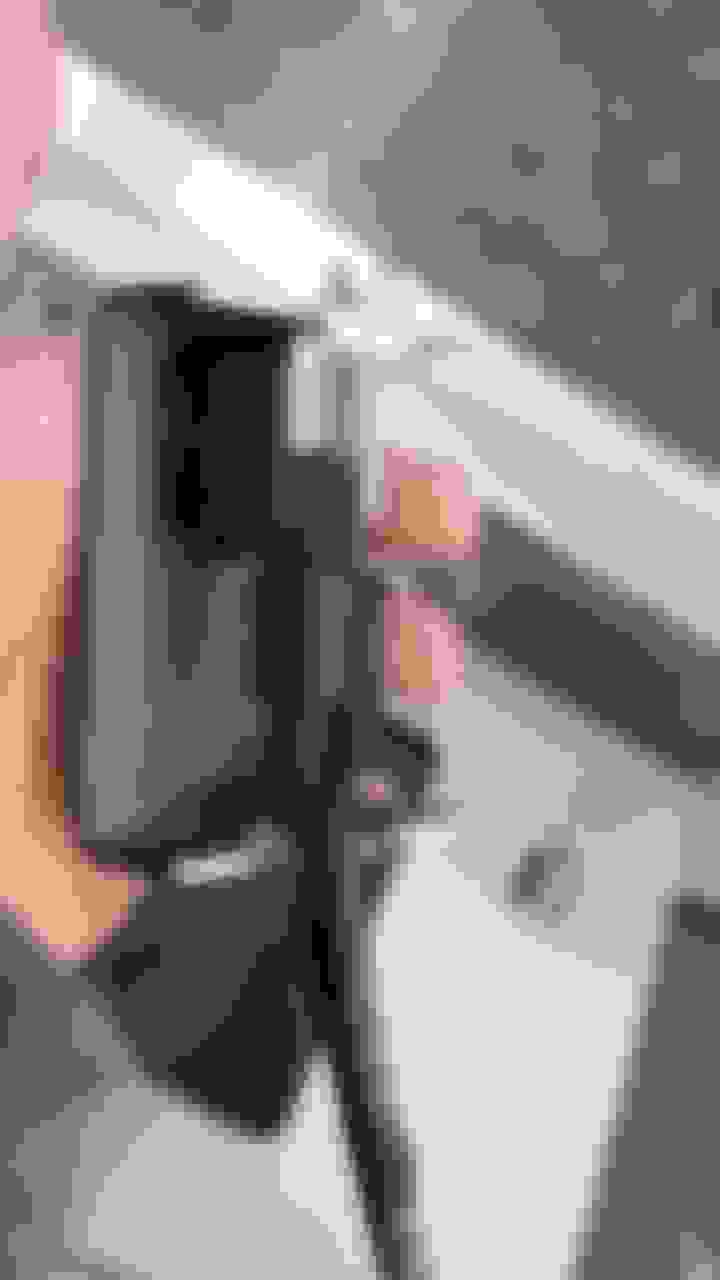
The light guide (circular parts) reflect this light towards the screen. The LED (yellow here, because white doesn't show up on a white background) fires along the width of the TV. I used my extensive artistic talents to draw this diagram: This wondrous diagram shows a top-down cutaway view of the right half of an edge-lit LED LCD. This way, the tall central surfaces can reflect the light that would otherwise just bounce back from the opposite side of the television. In these cases, the LEDs fire across a surface with ridges (or something similar) that gets progressively taller towards the center. The area directly in front of the LEDs will be bright, while the area farthest from (in this case, the center of the TV) will be dimmest. If you've ever put a lit flashlight on a table, you have an idea of the problem created by putting LEDs along the edge of a TV. Check out LED LCD backlights explained for more info on this. Some of these have their LEDs along just two sides (either top/bottom or on the sides), while others have LEDs on all four sides. Most LED LCDs today have their LEDs arranged along the edges of the screen (edge-lit). How these are implemented has a dramatic effect on uniformity. LED backlights, annoyingly and misleadingly referred to as "LED TVs," use tiny, efficient LEDs instead of CCFLs. Smaller LCDs may only have the CCFLs along the edges, making them perform similar to edge-lit LED models. It's possible then, on dark images, for the areas directly in front of a CCFL tube to be brighter than the areas between the tubes. This is pretty tough to do, made harder by the number of CCFLs, the expense spent on the diffusion material, and other design factors. Ideally, the diffusion layer perfectly evens out the light from the individual CCFLs, so that the entire screen is a uniform amount of light. Geoff Morrison's HDTV and home theater resource center and infotacular.Myths, Marketing, and Misdirection: HDTV edition.Why all HDMI cables are the same, Part 2.Geoffrey Morrison/CNET (via Home Theater magazine) For a sense of scale, this was a 40-inch LCD, each CCFL is little more than an 1/8th of an inch in diameter. Here you can see the translucent diffusion layer in between the liquid crystal and backlight. The image on the left is the same layers as the previous image, but with the camera stopped down to show the bright areas. The back, far right, of the image is the backlight itself surrounded by the plastic frame of the TV. This is actually translucent "white" plastic. The next layer (the bright white area in front of the gray plastic), is the diffusion layer.

The next layer (where you see the image) is the liquid crystal layer. The layer on the far left is the clear covering surface. What you're seeing is the entire TV, spread out so that each layer is separate and visible. Below is a look at the layers of a typical CCFL backlight TV.
LCD SCREEN LIGHTS SERIES
Because it's not perfect, parts of the screen are going to "leak" light.ĬCFL backlights are a series of tiny fluorescent lights, like miniature versions of what's found in offices, stores, etc. This LC/backlight system is never perfect, either due to manufacturing irregularities, design inefficiencies, or whathaveyou. In other words, during a dark scene, the backlight may dim so the image appears darker than what would be possible with just the liquid crystal. In more expensive TVs, the backlight may adjust depending on what is going on with the video. In the simplest of LCD TVs, the backlight creates a set amount of light. Let's just say the LC "blocks" the light. OK, so technically polarization filters block the light, the liquidĬrystal just twists the polarization, but for the ease of discussion, The LC glass is a complex sandwich of electrodes and liquid crystal whose sole job is to block the light created by the backlight. As I'll explain below, "LED TVs" are just regular LCD TVs that use LEDs as their backlight. On dark scenes, this can be visible and sometimes distracting.Īll LCD TVs are essentially two parts: a backlight, and the Liquid Crystal "glass." The backlight, commonly CCFL or LEDs, creates all the light. Certain areas of the screen are going to be brighter than other areas.
LCD SCREEN LIGHTS TV
Nearly every LCD TV on the market has a problem: uniformity.


 0 kommentar(er)
0 kommentar(er)
